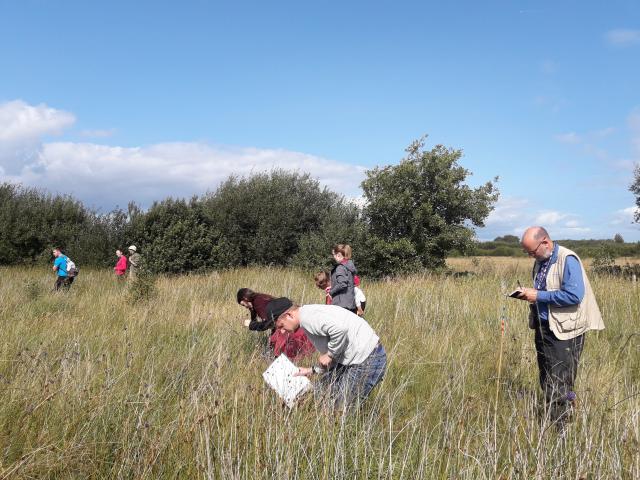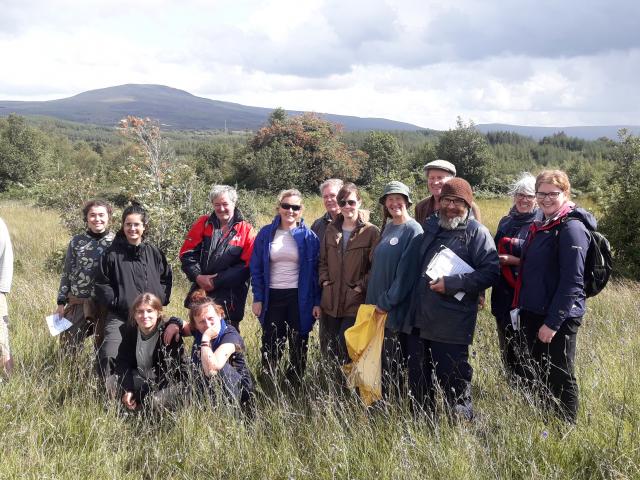Northern Ireland might only be a small country perched at the North-Western edge of Europe but we think it is a very special place!
It supports 25 species of butterfly and around 1100 species of moths. An intriguing species is the much sought-after Cryptic Wood White found nowhere else in the UK and the target of many butterfly lovers keen to add it to their list. For anyone wanting to see the species, a visit in June to Craigavon Lakes Local Nature Reserve is likely to be successful, providing the weather is kind of course!
There are a range of beautiful habitats and landscapes spread across our 5,500 square miles of land and 400-mile coastline. These have attracted growing numbers of tourists following the peace process and Good Friday Agreement of 1998. Much of the landscape is dominated by farming and 3.5% of the workforce is dependent on agriculture, approximately three times the UK average. With a temperate and famously wet climate, conditions are ideally suited to agricultural pasture suitable for sheep and cattle grazing. In addition to the loss of species-rich habitats, this has created problems of high levels of nutrient runoff and eutrophication of wetlands and semi-natural habitats which is having a negative effect on the habitats that butterflies, moths and other wildlife rely on.

As elsewhere in the UK, we work in a number of different ways to benefit the butterflies and moths of Northern Ireland. Our Northern Ireland Conservation Strategy identifies Marsh Fritillary as one of our highest priorities, especially as the country holds a significant percentage of the UK population of this threatened butterfly. A particular focus is the work we are doing with farmers and other partners for Marsh Fritillaries. This forms part of the €4.9m European Interreg VA funded ‘Co-operation Across Borders for Biodiversity’ (CABB) project which aims to restore degraded peatland habitats and benefit a number of priority species associated with them. The work is at an early stage but we are optimistic that we will start to see increasing numbers of this special and beautiful butterfly.
We are also developing our work to influence the policies that affect how land is managed and to encourage wildlife-friendly farming. We have distributed our "Managing Land for Butterflies and Moths" guidance to key officials and have recently responded to an important discussion document which is the precursor to a new Northern Ireland Environment Strategy. In our view, this needs to be more ambitious with clear targets for the recovery of wildlife and more specific action on climate change. There is a lot to do because although Northern Ireland is home to some wonderful wildlife, there is much which has been lost or degraded. Most shockingly, less than 0.2% of protected sites are in favourable management which is over 200 times less than the equivalent figure for English protected sites. However, policy work in Northern Ireland has been made much more difficult in the absence of political leadership as there has been no functioning Northern Ireland Assembly for almost three years, although the political parties have just agreed on a new power-sharing deal to restore the devolved Northern Ireland government at Stormont.

To meet the conservation challenges, we will need to develop our work and increase our impact in Northern Ireland. We already have almost 400 members and an active Branch formed in 1988 but we know that without the involvement and support of people, it is impossible to achieve our ambitions for butterflies, moths and the wider environment. We hope to see a future where even more of the people of Northern Ireland have fallen in love with butterflies and moths and the populations of both threatened and widespread species are flourishing as a result.
Rose Cremin – Invertebrate Field Officer, Northern Ireland
Chris Corrigan - Policy Co-ordinator
Follow Chris on Twitter


